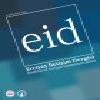Halkla İlişkiler Faaliyetlerinde Kullanılan Dil: T.C. Aile ve Sosyal Politikalar Bakanlığı Örneği
Bu çalışmada halkla ilişkiler faaliyetlerinde kullanılan dilin özellikleri ve unsurlarının ortaya konulması, bu dilin çeşitli yaklaşımlar açısından incelenmesi ve bu doğrultuda halkla ilişkiler faaliyetlerde kullanılan dilin genel karakteristiğinin tespit edilmesi amaçlanmıştır. Çalışmanın amacına ulaşabilmesi ve sorulara cevap verilebilmesi için halkla ilişkiler faaliyetlerinde kullanılan dil; retorik, söylem ve argümantasyon kuramı yaklaşımları bağlamında ele alınmıştır. Araştırma bölümünde ise literatür ışığında halkla ilişkilerde dil kullanımının incelenmesi için örnek olarak seçilen T.C. Aile ve Sosyal Politikalar Bakanlığı’na ait farklı halkla ilişkiler metninin analizi yapılmıştır.
Anahtar Kelimeler:
Halkla İlişkiler, Dil, Retorik, Söylem, Argümantasyon
The Use of Language in Public Relations Activities: The Example pf T.C. Ministry of Family and Social Policies
In this study, the features, elements and the various approaches to the language in public relations activities are examined. In this direction, it is aimed to identify the general characteristics of the use of language in public relation. For this purpose and the answering research questions; use of language in public relations activities investigated in the aspect of rhetoric, semiotics, discourse and the argumentation theory. And in the research different public relations text of T.C. Ministry of Family And Social Policies analyzed for determining the Ministry’s use of language in public relations activities.
Keywords:
Public Relations, Language, Rhetoric, Discourse, Argumentation,
___
- Anık, C. (2010). Logos Olarak İletişimi Tartışmak. İletişim Kuram ve Araştırma Dergisi, 30, VII-XXIII.
- Aristoteles (2015). Retorik. Çev. Mehmet H. Doğan Yapı Kredi Yayınları.
- Brockriede W. ve Ehninger D. (1960) Toulmin on argument: An interpretation and application, Quarterly Journal of Speech, 46:1, 44-53, DOI:10.1080/00335636009382390
- Cheney, G., Christensen, L. T., Conrad, C., ve Lair, D. J. (2004). Corporate rhetoric as organizational discourse. The Sage handbook of organizational discourse, 79-103.
- Haase, F. A. (2009). Towards a theory for professional communications. Discourse and communication elements in contemporary marketing and PR strategies. Punto Cero, 14, 75-89.)
- Heath, R. L. (2001). Handbook of public relations. Sage.
- Heath, R. L. (2009). The rhetorical tradition: Wrange in the Marketplace Rhetorical and critical approaches to public relations II, 17-47.
- Heath, R. L. ve Frandsen, F. (2008). Rhetorical perspective and public relations: Meaning matters. Public relations research, 349-364.
- Heller M. (2016) Foucault, Discourse, and the Birth of British Public Relations. Enterprise & Society, 17(03), 651-677).
- Hill, J. W. (1958). Corporate public relations: Arm of modern management. New York: Harper& Brothers Publishers.
- http://www.aile.gov.tr/basin-aciklamalari/20062016 Erişim Tarihi: 11.04.2017.
- http://www.koruyucuaile.gov.tr/data/561cf9d9369dc58a0067a3bf/ Koruyucuailenedirbro%C5%9Fur_uzun.pdf Erişim Tarihi: 12.04.2017.
- Karbach, J. (1987). Using Toulmin’s Model of Argumentation. Journal of Teaching Writing, 6(1), 81-91.
- Kneupper, C. W. (1978). Teaching argument: An introduction to the Toulmin model. College Composition and Communication, 29(3), 237-241.
- L’Etang, J. (2008). Public relations, persuasion and propaganda: Truth, knowledge, spirituality and mystique. Public Relations Research, 251-269.
- L’Etang, J.ve Pieczka, M. (1996). Critical perspectives in public relations. London: International Thomson Business Press
- Locker, K. O. ve Keene, M. L. (1983). Using Toulmin logic in business and technical writing classes. Technical and business communication in two-year programs, 103-110.
- Mackey, (2013). A sophistic rhetorical approach to public relations. PRism, 10(1), 1-14.
- Peter G. ve Wilson C. R. (2013) The Toulmin Model of Argumetation http://www. navigatingaccounting.com/exercise/exercises-critical-thinking-usingtoulmin-model Erişim Tarihi: 17.01.2017
- Pieczka, M. (2006). Paradigms, System Theory and Public Relations. Public relations: Critical debates and contemporary practice, 333.
- Ramage, J. ve Bean, J. (1998). Writing arguments (4th edition). MA: Allyn & Bacon. Skerlep, Andrej (2002),”Re-evaluating the role of rhetoric in public relations theory and in strategies of corporate discourse”, Journal of Communication Management, Vol. 6 Iss 2 pp. 176 - 187).
- Toth, E. L. (2009). The case for pluralistic studies of public relations: Rhetorical, critical, and systems perspectives. Rhetorical and critical approaches to public relations II, 48-60
- Van Dijk, T. A. (1989). Structures of discourse and structures of power. Annals of the International Communication Association, 12(1), 18-59.
- Waterfield, R. (2000). The first philosophers: the presocratics and sophists. Oxford Paperbacks.
- Weaver, C. K., Motion, J., & Roper, J. (2006). From propaganda to discourse (and back again): Truth, power, the public interest and public relations. Public relations: Critical debates and contemporary practice, 7-21.
- ISSN: 1308-3198
- Yayın Aralığı: Yılda 2 Sayı
- Başlangıç: 2009
- Yayıncı: Erciyes Üniversitesi İletişim Fakültesi
